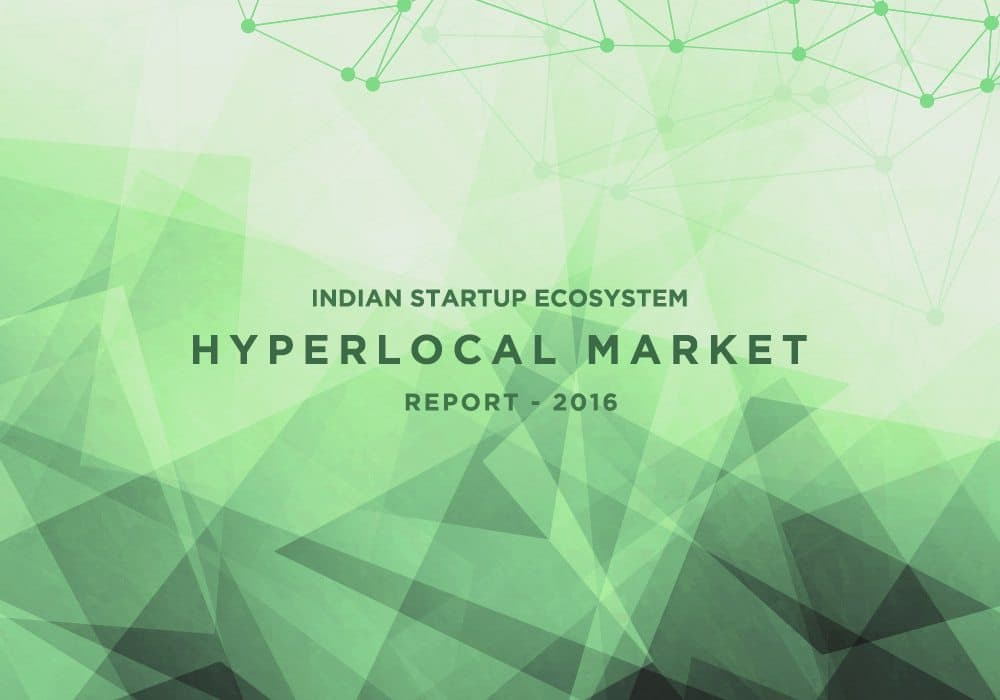One of the hottest categories that emerged in the startup domain in last one year is Hyperlocal. The copious rise of Internet users, surge of payment options, increase in geo-location aware devices and increased demand for insta-delivery, have paved the way for hyperlocal businesses in India. While the term seems to have come to prominence in 2015, it’s not at all a new concept. A committee of citizens formed in a specific locality to conduct community activity, or keep them clean, is a hyperlocal concept. In Mumbai, Advance Local Management (ALM is initiated in 1998 with 658 ALMs in all 24 wards of Mumbai.) is a crude form of hyperlocal, so are the Municipalities and Panchayats examples of hyperlocal governance.
The concept of Hyperlocal in business emerged later around 2010 when startups like Zomato, Ola, Meru realised the potential of on-demand service. Although the concept of hyperlocal service emerged with these startups, the recognition as a market came with entrepreneurs recognising the consumer goods and service market. Startups like Grofers, Faasos and TinyOwl received million dollar fundings in February 2015, this facilitated the rise of what we would call in 2016 a Hyperlocal Bubble. Indian Startup Ecosystem was already in a spree. Deals were high so was the ticket size, and an emerging niche sector like hyperlocal, became investor’s playground.
H1 2015 to H2 2015 observed a phenomenal jump of almost 500% in Total Deal Value and 50% increment in Number of Deals. Around 81% of total hyperlocal startups that secured funding were funded in 2015, in addition to that 180 (around 50% of total number of hyperlocal startups in India) were launched.
Although, hyperlocal seemed the next emerging market in 2015, merging the online and offline platforms in order to bring massive scale demand and deliver the goods in the shortest possible time, proved to be an uphill task.
However, investor confidence seemed to fade with the end of 2015. In H1 2016, out of the 64 startups that got funding, 51% of the total Deal Value was received by 27% of the total number of deals (of which 75% were in Late Stage). Furthermore, number of hyperlocal startups founded in 2016 dropped by 93%.
Key Findings
There has been a steep rise in funding from 2015. H2-2015 and H1-2016 have observed fundings of major players like Swiggy, BigBasket, Grofers, PepperTap, that received more than $50 Mn in deal value in their funding rounds.
- 50% of total hyperlocal startups (around 200 startups) were founded in 2015, while, in 2016 first half only 13 startups have come up. It is almost 93% drop from previous year
- Out of the 64 Startups that got funding in 2016, 51% of the total deal value was received by 27% of the total number of deals. Big tickets were restricted to late stage startups
- About 25% of total number of startups in hyperlocal market have shut down and 10% have been merged or acquired by bigger players in the market
- Although, by number of deals, FoodTech tops the chart, major deal value was observed in the Coupon and Deals sector, given discount driven local commerce in India
- About 50% of all hyperlocal startups, are operational in Delhi/NCR and Bangalore
- Bangalore being the Top city in terms of deal value, shows highest amount of Late Stage funding as compared to Delhi/NCR and Mumbai.
- SAIF Partners, Accel Partners and Sequoia Capital came out to be the most active VC firm funding in Hyperlocal Space while Sahil Barua and Kunal Bahl are the most active angels
- Major Shutdown and M&A occurred in Startups in FoodTech and grocery Sector given too many me-too models. Among the funded startups major exits happened in early stage: seed funding stage
We will be doing individual analysis of FoodTech, Grocery and hyperlocal bubble, stay tuned!
[Research & Analysis by Ankan Das, Meha Agarwal, Pooja Sareen; Graphics & Designs by Satya Yadav]
